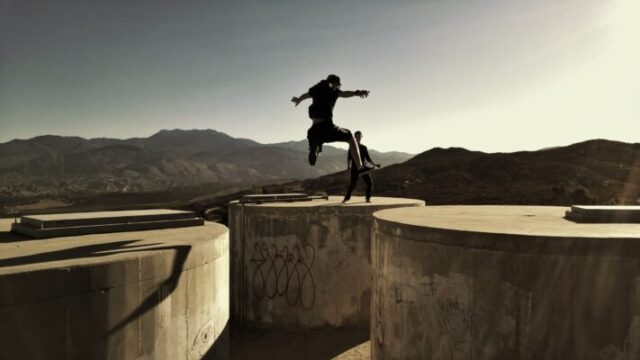The Beginner’s Guide to Parkour (How to Shift a Ninja)
Introduction
Are you ready to embark on a thrilling journey that combines athleticism, creativity, and an adventurous spirit? Welcome to The Beginner’s Guide to Parkour (How to Shift a Ninja). Parkour, often referred to as “the art of movement,” is an exhilarating discipline that allows practitioners to traverse urban landscapes with grace and precision. In this guide, we’ll dive deep into the world of parkour, providing you with step-by-step instructions, expert tips, and real-world insights to help you master the art of shifting like a ninja.

The Beginner’s Guide to Parkour (How to Shift a Ninja)
Parkour, derived from the French word “parcours” meaning “course,” is a physical discipline that involves using your body to navigate through obstacles in your environment. It’s more than just a sport; it’s a way of life that encourages individuals to develop their physical and mental abilities. Whether you’re a complete novice or someone looking to enhance your existing skills, this guide is your ultimate companion on your journey to becoming a parkour ninja.
Key Concepts and Terminology
Before we dive into the practical aspects of parkour, let’s familiarize ourselves with some key terms that will be essential throughout your learning journey:
- Parkour: The art of efficiently moving from point A to point B, overcoming obstacles using only your body’s abilities.
- Traceur/Traceuse: A practitioner of parkour. The term “traceur” is used for males, while “traceuse” is used for females.
- Obstacle: Any physical element in your environment that challenges your movement, such as walls, rails, or gaps.
- Flow: The seamless and fluid execution of movements as you transition from one obstacle to another.
Safety First: Essential Precautions
Before you start practicing parkour, it’s crucial to prioritize safety. Here are some essential precautions to keep in mind:
- Warm-Up: Always begin with a thorough warm-up to prepare your muscles and joints for physical activity.
- Proper Footwear: Wear comfortable and supportive athletic shoes that provide good traction.
- Start Small: Begin with simple movements and gradually progress to more complex techniques.
- Awareness: Always be aware of your surroundings and choose practice locations carefully.
- Progress at Your Pace: Parkour is a journey, not a race. Respect your body’s limitations and progress at a pace that feels comfortable.
Getting Started: Basic Techniques
1. The Art of Landing
Landing is a fundamental skill in parkour. It involves absorbing the impact of your jumps to prevent injury. Follow these steps for a safe landing:
- Bend your knees and hips to absorb shock.
- Land on the balls of your feet, rolling onto your heels.
- Keep your chest up and your core engaged.
2. Precision Jumping
Precision jumps involve leaping from one point to another with accuracy. To perform a precision jump:
- Measure the distance and align your takeoff and landing spots.
- Swing your arms for balance and jump explosively.
- Bring your knees up to your chest to clear obstacles.
3. Basic Vaulting
Vaulting helps you overcome obstacles efficiently. The safety vault is a beginner-friendly technique:
- Approach the obstacle at a comfortable jogging pace.
- Place one hand on the obstacle and swing your legs through.
- Keep your eyes on the obstacle to maintain balance.

Mastering Movement: Advanced Techniques
1. Wall Running
Wall running involves using a wall to gain height or traverse a gap. Follow these steps:
- Sprint towards the wall at a slight angle.
- Place one foot on the wall and use it to push off.
- Swing your arms for momentum and extend your legs to reach higher.
2. Cat Leap
The cat leap is a dynamic movement that helps you cover long distances. Here’s how to execute it:
- Run towards the edge of the obstacle.
- Jump and reach forward with your hands, engaging your core.
- Land on the opposite side with your feet absorbing the impact.
3. Parkour Rolls
Rolls are essential for reducing the impact of landings and maintaining momentum. The shoulder roll is a foundational technique:
- As you land, roll diagonally across your back, shoulder, and hip.
- Keep your chin tucked and your arms close to your body.
- Use the momentum to smoothly transition into the next movement.
FAQs
Q: Is parkour only for athletes? A: Parkour is for everyone! It’s about improving physical abilities and self-expression.
Q: Can I practice parkour indoors? A: While it’s best to practice in open spaces, you can adapt movements for indoor environments.
Q: Do I need any special equipment? A: All you need are comfortable clothes and a pair of supportive athletic shoes.
Q: How long does it take to become proficient? A: Progress varies, but with consistent practice, you can see improvement in a few months.
Q: Is parkour dangerous? A: Like any physical activity, there are risks. Proper training and caution minimize these risks.
Q: Can I learn parkour from online tutorials? A: Online resources can be helpful, but consider training with an experienced instructor for safety.
Conclusion
Congratulations, you’ve completed your initiation into the exciting world of parkour! Remember, parkour is not just about the physical feats; it’s a mindset that encourages creativity, adaptability, and pushing your boundaries. As you continue to practice and refine your skills, embrace the journey and enjoy the freedom of movement that parkour offers. Now, go out there and shift like a ninja, traversing the urban landscape with confidence and finesse.







